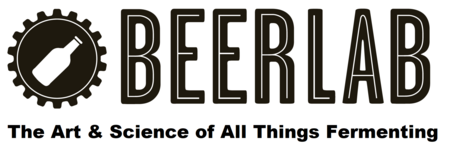Growing up your own yeast and maintaining your stocks can be a very daunting concept, but if you follow a few simple steps, you will find that it is not that intimidating. Provided you keep things
sanitary, you will soon be benefiting from the rewards (faster fermentations and cleaner beers) of
pitching live yeast at the correct pitch levels.
Equipment/consumables:
- Erlenmeyer flasks (2 liter is a good size)
- Stir plate
- Stirrer bar
- Dry malt extract
- Yeast nutrient
- Hops (your old expired ones will do perfectly)
- Camping gas stove/Bunsen burner
- Spray bottle of sanitiser

Sterilizing wort in the flask:
The best starting gravity for your starter is 1.036 to 1.040. You can sterilise your flask, stirrer bar
and wort by simmering directly on your stove top for approximately 45 minutes with a cotton-
wool bung (acts like a filter to stop anything getting in) covered with tin foil, and then a further 40
minutes the following day (a method of tyndallization) (of course, you will need to take into
account any boil-off during this process, and thus you will need to reduce your initial starter
gravity to avoid an OG too high). Adding a few hop pellets into the wort before sterilising adds a
further method of keeping contamination out (hops are a natural antimicrobial agent). You can also sterilise top-up wort in a pressure cooker if you have one. This acts like a mini-autoclave and is very effective.



Inoculating your starter with yeast:
You can use either dry yeast (such as Fermentis), or liquid yeast (Wyeast or Whitelabs). To scale
dry yeast up in volume, you would normally follow a rehydration step in 27°C ± 3°C sterile water
or wort for 15-30 mins, and then you would add this yeast to the starter. Liquid yeast has a much
shorter shelf life than the dehydrated yeast, and therefore, more commonly needs a starter.
To ensure your starter stays clean of contamination, there are a few things you can do. Sanitise
your work area around you as well as your hands before starting. Have your Bunsen burner or
camping gas burner lit and close by. Each time you remove the cotton-wool and tin foil bung, you
need to flame the neck of the flask, this ensures that if any contamination is on the neck of the
flask, you will kill it, and it also allows for a steady rise of hot air away from the open flask, to
prevent any bacteria/wild yeast settling on your flask.
If you are growing up a sachet of dry yeast, sanitise the outside of the sachet as well as the scissors you will use to open it, with acidisan (or equivalent). If you are using a liquid culture in a vial, then sanitise the outside of this too. These vials are usually plastic, so you won’t be able to flame the edges of it, you just need to work quickly in decanting it into your flask, and try to work as near to the flame as possible. Once you have added the yeast into the flask, flame the neck of the flask again, and replace the cotton wool and tin foil bung. It is usually required that you let the flask containing the newly added yeast to sit on a table top for approximately 30 minutes, before placing it on the stir plate for the growth stages. You can scale up the yeast even more by adding sterile wort into the flask following the same sterile technique discussed above. If need be, you can decant some of the spent wort from your flask to make space for fresh wort to continue its growth. I always taste the spent wort to get a gauge on how the yeast is doing.
With this, you should be all set to grow your own yeast starters. Good luck!
